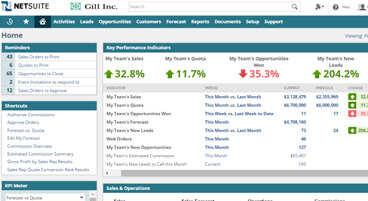Product Features
For Manufacturing
Home / Customer Relationship Management
Menu
Customer Relationship Management
Powerful CRM capabilities that drives the complete customer lifecycle and strengthens customer relationships
NetSuite CRM is the only cloud solution that delivers a real-time 360-degree view of your customer. NetSuite CRM provides a seamless flow of information across the entire customer lifecycle from lead through to opportunity, sales order, fulfillment, renewal, upsell, cross-sell, and support.
Key Benefits
- Delivers powerful CRM capabilities, including sales force automation (SFA), marketing automation, customer support and service.
- Streamlines lead-to-cash processes.
- Elevates productivity across the organization with a 360-degree view of your customers.
- Improves sales performance through forecasting, upsell and commission management.
- Manages global sales and services organizations.
- Includes powerful sales performance management, order management and partner management.






























